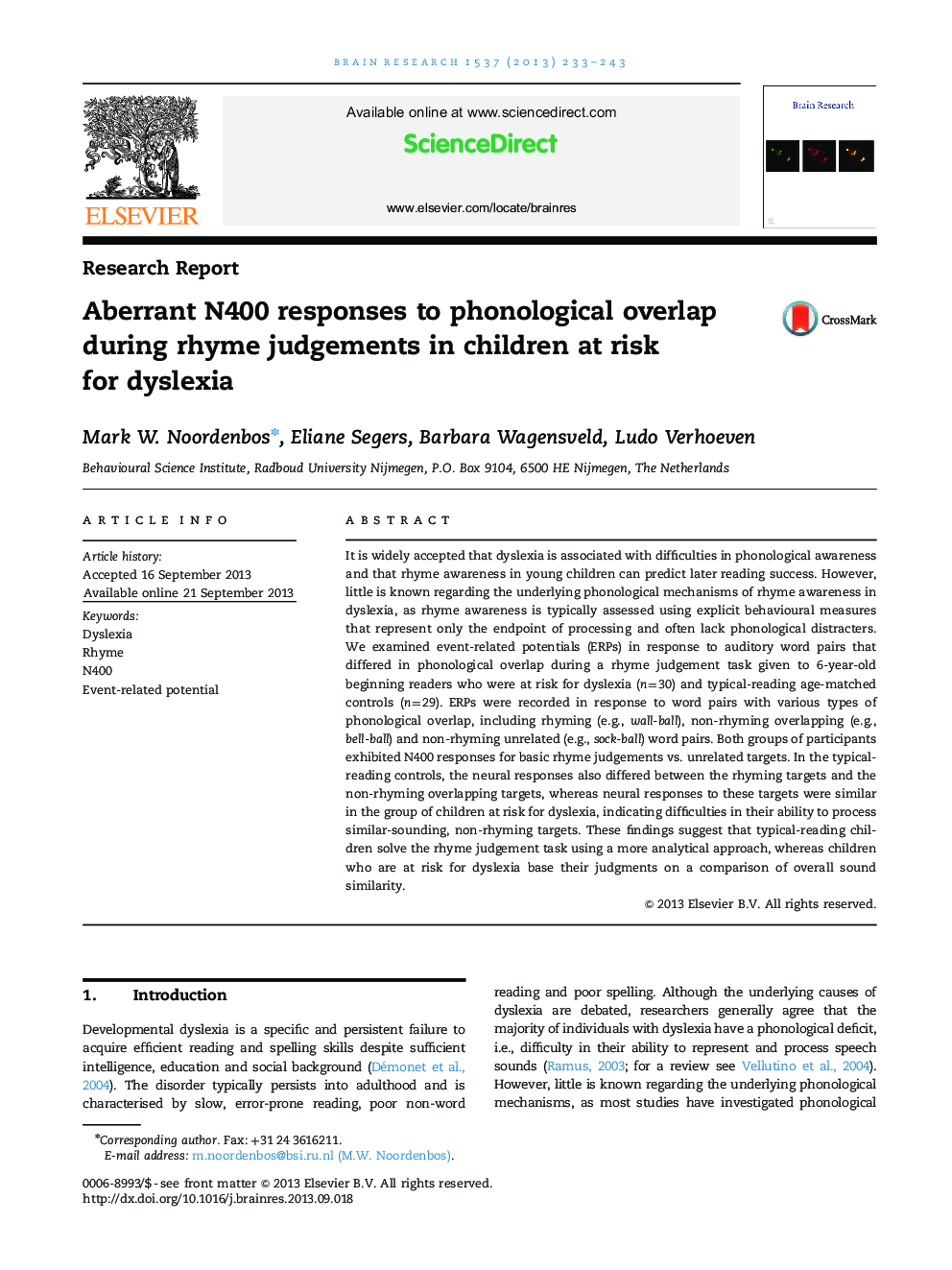| کد مقاله | کد نشریه | سال انتشار | مقاله انگلیسی | نسخه تمام متن |
|---|---|---|---|---|
| 6263558 | 1613902 | 2013 | 11 صفحه PDF | دانلود رایگان |

- ERPs were recorded in response to a variety of phonological overlap in children at risk for dyslexia and controls during rhyme judgements.
- Both the at-risk and control children had lower N400 responses to rhyming targets compared to unrelated targets.
- In the control group, the neural responses differed between rhyming targets and overlapping targets.
- The at-risk children had similar neural responses to rhyming and overlapping targets.
- Outcomes suggest that at-risk and control children may have different approaches in solving rhyme judgements.
It is widely accepted that dyslexia is associated with difficulties in phonological awareness and that rhyme awareness in young children can predict later reading success. However, little is known regarding the underlying phonological mechanisms of rhyme awareness in dyslexia, as rhyme awareness is typically assessed using explicit behavioural measures that represent only the endpoint of processing and often lack phonological distracters. We examined event-related potentials (ERPs) in response to auditory word pairs that differed in phonological overlap during a rhyme judgement task given to 6-year-old beginning readers who were at risk for dyslexia (n=30) and typical-reading age-matched controls (n=29). ERPs were recorded in response to word pairs with various types of phonological overlap, including rhyming (e.g., wall-ball), non-rhyming overlapping (e.g., bell-ball) and non-rhyming unrelated (e.g., sock-ball) word pairs. Both groups of participants exhibited N400 responses for basic rhyme judgements vs. unrelated targets. In the typical-reading controls, the neural responses also differed between the rhyming targets and the non-rhyming overlapping targets, whereas neural responses to these targets were similar in the group of children at risk for dyslexia, indicating difficulties in their ability to process similar-sounding, non-rhyming targets. These findings suggest that typical-reading children solve the rhyme judgement task using a more analytical approach, whereas children who are at risk for dyslexia base their judgments on a comparison of overall sound similarity.
Journal: Brain Research - Volume 1537, 6 November 2013, Pages 233-243